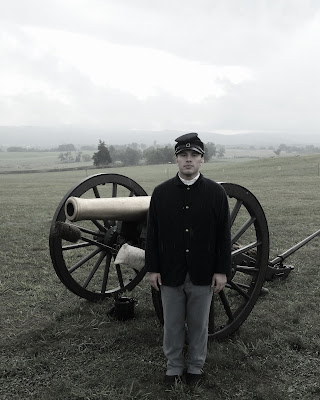We began our visit to Christiansted National Historical
Site (CHRI), Buck Island Reef National Monument (BUIS) and Salt River Bay National Historical Park and Ecological Preserve (SARI) with a short flight
from St. Thomas to St. Croix on a small plane.
It's always fun to get lined up by size to get your seat assignment. But, flying between the islands was so quick and
easy!
 |
| Our plane from St. Thomas to St. Croix |
 |
| Ranger Fernandez arrives home on St. Croix |
We arrived at CHRI and ProRanger Kelechi Akabogu led us on a tour of the Danish fort, Fort Christianvaern, and its associated buildings, including the Scale House and the Steeple Building.
 |
| Scales used to weigh imports and exports, and probably slaves |
 |
| ProRanger Akabogu standing guard |
 |
| Inside the fort's dungeon - not built for tall people! |
 |
| Rangers Fernandez and Rivera with ProRanger Akabogu. |
|
|
|
|
Then we headed out to Salt River Bay National Historical Park and Ecological Preserve. We planned to meet up with the superintendent, but he was working with the Youth Conservation Corps students and we ended up just missing him all
around the island! At Salt River, we toured the Visitor Center and viewed artifacts from the Taino people before visiting the construction site of the Salt River Bay Marine Research and Education Center.
Due to some interesting jurisdictional issues, we stood on the shoreline and discussed cases that Rangers Fernandez and Rivera had encountered at SARI. Then we moved to hypothetical variations and an in depth discussion of the various sections of 36 C.F.R. and how they might apply. ProRanger Akabogu demonstrated an impressive command of the regulations!
 |
| Views from the Salt River Visitor Center |
 |
| Well tower at Salt River |
 |
| Rangers Rivera and Fernandez quizzing ProRanger Akabogu |
We ended the day at the ranger station with interviews with Chief Ranger Isander Rodriguez. WE also secured a commitment from Ranger Rivera to offer a “use of force” class
for the ProRangers via webex!
 |
| Chief Ranger Rodriguez, Ranger Fernandez and ProRanger Akabogu |
Then it was a reunion for Ranger Fernandez – the law
enforcement rangers along with a members of administration and other divisions joined us all
for another amazing dinner at Kelechi’s favorite restaurant, El Sol. Oh, the stories I can now tell!
The next morning we talked with Superintendent Joel Tutein and presented our plaque. As we stood outside,
I couldn’t help but notice that he seemed to
know everyone who passed by, who all smiled, waived and honked their
greetings!
 |
| ProRanger Akabogu and Superintendent Tutein |
 |
| Ranger Fernandez, ProRanger Akabogu and Rangers Laurencin and Rivera |
 |
| Lifesaving practice! |
 |
| "Captain" Akabogu |
Then we headed out for a tour of Buck Island
with Kelechi in the captain's chair! Ranger Fernandez was a tough judge of Kelechi's boating skills, but she passed! On day four of the trip and on my third island, I finally got the chance to go in the
water!
It was beautiful!
We took the opportunity for Kelechi to
practice her rescue skills and she alternated between throwing the rescue rope
to both me and Adrian until she could accurately “save” us and pull us in.
 |
| Wet hugs to thank our (dry) rescuer! |
As a storm headed in, we returned to the park and then the airport.
Unfortunately, we missed our flight and we were forced to spend an extra
night on St. Croix as there weren’t any seats available until the next
afternoon. Fortunately, my room in park
housing was still available!
Up next: SAJU


























